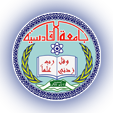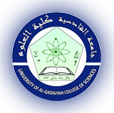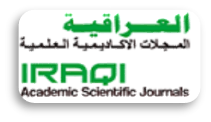Document Type
Article
Abstract
The Main Drain is one of the largest irrigation projects which is used to collect drainage water from the lands extended on both sides of the water channel and diverts it to Shatt Al-Arab and from there to the Arabian Gulf. The Main Drain passed in Dhi-Qar Governorate to the northeast of Nasiriyah oil field in the Kati’a area, which is about 38 km from the center of the city of Nasiriyah. The objective of the present research is to evaluate the water quality, and its temporal change of the Main Drain, and if there is an impact of the Nasiriyah oil field on the water quality of this Drain. The hydrochemical analysis of the collected water samples showed high TDS, and high concentration of major ions, that exceeded the permissible limits of the approved standards (WHO and IQS), which is due to the salinity of the soil around the channel, industrial wastes, and wastes by human activities. The water of the Main Drain is also polluted with high concentrations of cadmium and zinc,whereas, the concentrations of lead and copper are within the permissible limits. The low concentrations of lead indicates a low possibility of contamination of the Main Drain water with the Nasiriyah oil field oprations, where lead represents the most important wastes of oil extraction. The results of comparing the quality of the current water with its quality during the year 2013, showed an increase in its salinity, with higher ionic concentrations. This proved the shortages of water releases from the upstream countries in addition to the effect of climate changes.
Keywords
Water pollution, The main Drain, Heavy metals, Nasiriyah oil field, Climate change.
Recommended Citation
Nomas, Ali H. and Al-Shamma, Ayser
(2023)
"Water quality evaluation of the Main Drain in Dhi-Qar Governorate, south Iraq,"
Al-Qadisiyah Journal of Pure Science: Vol. 28
:
No.
1
, Article 17.
Available at:
https://doi.org/10.29350/2411-3514.1016
Creative Commons License

This work is licensed under a Creative Commons Attribution-NonCommercial-No Derivative Works 4.0 International License.
Included in
Biology Commons, Chemistry Commons, Computer Sciences Commons, Environmental Sciences Commons, Geology Commons, Mathematics Commons, Nanotechnology Commons










